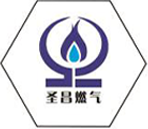
Dec . 25, 2024 06:45
Back to list
gas coalescer
The Importance of Gas Coalescers in Industrial Applications
Gas coalescers are critical components in various industrial processes, particularly in the oil and gas sector, where the separation of gas and liquid phases is often necessary. These devices play a pivotal role in ensuring the efficiency and safety of operations, with applications ranging from natural gas processing to petrochemical production. Understanding the function and benefits of gas coalescers can help industries optimize their processes and mitigate environmental impacts.
What is a Gas Coalescer?
A gas coalescer is a filtration device designed to separate and remove liquid contaminants from gas streams. The primary mechanism involves the coalescence of tiny liquid droplets into larger ones, which can then be drained off. This process is critical, as most gases produced in industrial processes contain impurities such as water, oil, or other hydrocarbons. If these contaminants are left unchecked, they can lead to equipment corrosion, reduced efficiency, and increased operational costs.
Gas coalescers typically consist of a coalescing filter element, which is designed to capture and merge small liquid droplets. The design and material of the filter are crucial; they must possess high efficiency while allowing gas to pass through with minimal pressure drop. This ensures that the system operates effectively without significant energy losses.
Applications in the Oil and Gas Industry
One of the primary applications of gas coalescers is in natural gas processing. During extraction, natural gas often comes mixed with water vapor and liquid hydrocarbons. The presence of these liquids can cause problems downstream, including compressor inefficiencies, pipeline blockages, and safety hazards. By employing gas coalescers, operators can effectively remove these impurities before the gas enters the pipeline or processing plant.
In the petrochemical industry, gas coalescers serve a similar function. They help to protect sensitive equipment and maintain product quality. For example, in processes involving the production of ethylene or propylene, the presence of contaminants can interfere with chemical reactions and yield, leading to significant financial losses. Implementing coalescing technology not only enhances operational reliability but also contributes to higher-quality end products.
gas coalescer

Benefits of Using Gas Coalescers
1. Enhanced Operational Efficiency By removing liquids from gas streams, coalescers help maintain optimal flow rates and pressure levels. This leads to reduced energy consumption and lower operational costs.
2. Protection of Equipment Gas coalescers shield compressors, turbines, and other machinery from liquid damage. This increases the lifespan of critical components and decreases maintenance and replacement costs.
3. Environmental Protection By ensuring that gas is free from harmful contaminants, gas coalescers help industries comply with environmental regulations. This reduces the risk of leaks and emissions, contributing to a greener operation.
4. Improved Safety Liquid hydrocarbons and volatile compounds can pose safety hazards. By efficiently removing these liquids from gas streams, coalescers help minimize the risk of flammable mixtures, thereby enhancing workplace safety.
5. Quality Control Gas coalescers contribute to maintaining the purity of the gas products. High-quality gas is essential for achieving desired outcomes in chemical reactions and ensuring product integrity.
Conclusion
As industries continue to prioritize efficiency, safety, and environmental sustainability, the role of gas coalescers has become increasingly significant. Their ability to separate liquid contaminants from gas streams plays an essential part in optimizing operations and protecting both equipment and the environment. In an era where resource management and operational efficiency are critical, gas coalescers stand out as vital tools that can contribute significantly to overall industrial performance. Embracing advanced coalescing technologies not only positions companies for success but also supports a sustainable future in industrial operations.
Next:
Latest news
-
Safety Valve Spring-Loaded Design Overpressure ProtectionNewsJul.25,2025
-
Precision Voltage Regulator AC5 Accuracy Grade PerformanceNewsJul.25,2025
-
Natural Gas Pressure Regulating Skid Industrial Pipeline ApplicationsNewsJul.25,2025
-
Natural Gas Filter Stainless Steel Mesh Element DesignNewsJul.25,2025
-
Gas Pressure Regulator Valve Direct-Acting Spring-Loaded DesignNewsJul.25,2025
-
Decompression Equipment Multi-Stage Heat Exchange System DesignNewsJul.25,2025

